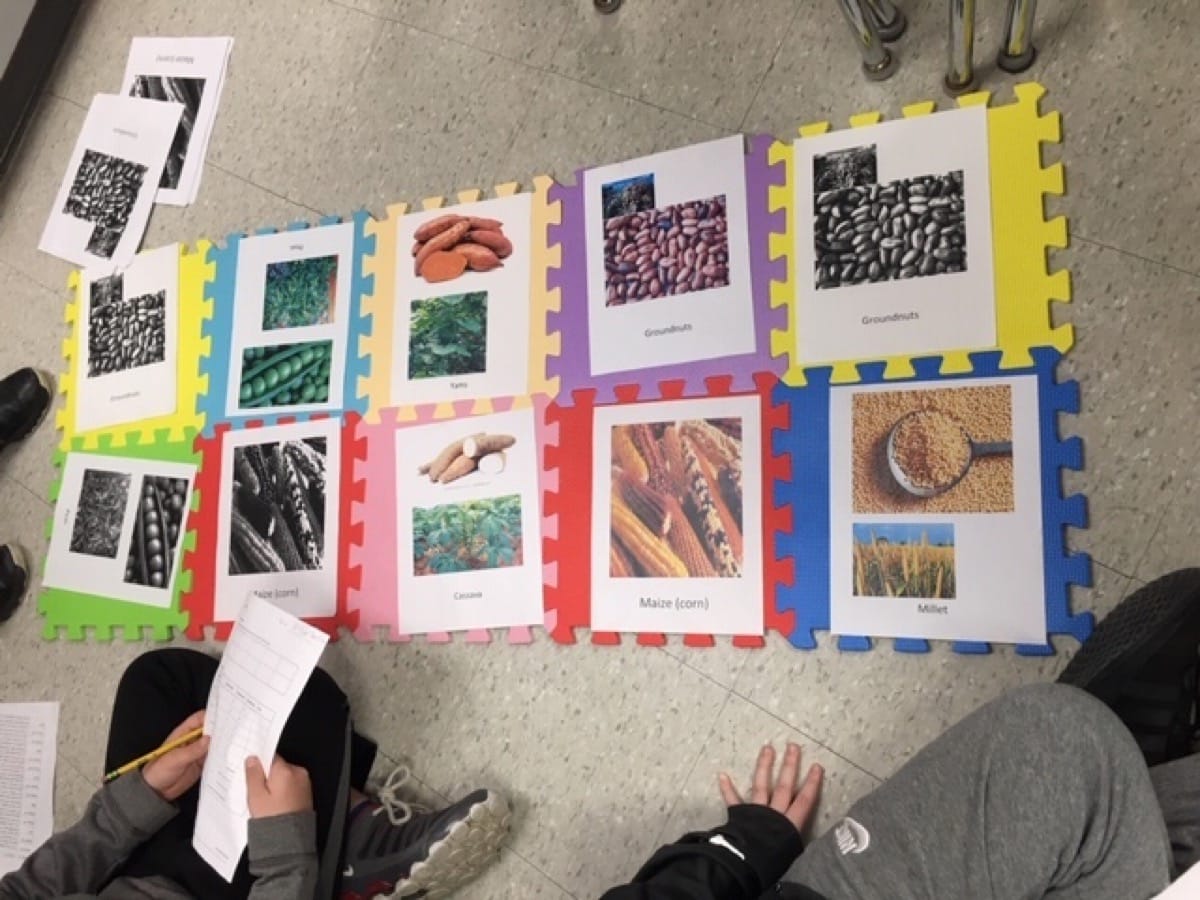
Rebecca Foltz of Sheridan Middle School attended last summer’s two-day Feed the World workshop and was introduced to lots of great curriculum on our website. She talks about what she took back to her students:
The lesson I chose to do with my 6th graders was Farming for the Future, as an extension of our unit on soil. Our school is located in a very rural area. While not all of the students live on farms, they are very aware that farming is important to the community. The school itself is surrounded by cornfields. The Farming for the Future lesson is a simulation of a village making decisions about the crops they will plant and how their choices affect the quality of life in their village.
The lesson began with the students looking at the United States Census Bureau Population Clock. It compares the population of the United States with the population of the world. Among the many statistics on the website is the list of the world’s top ten most populated countries. The students were amazed—they had no idea that the world population was growing so quickly. When I transitioned to the Feed the World activity, they had a better understanding of why it is so important that we are good stewards of the Earth and of the importance of sustainable farming.
Students were given 10 mats on which to “plant” their fields. They could choose from yams, cassava, maize, millet, groundnuts, and peas. After “planting”, the groups rolled dice to see if they would have a wet year or a dry year, which would affect the yield. The first year was dry, so crop yields were low. After that each group chose an impact card with such events as ‘flooding occurs’, ‘a normal harvest’, or ‘the village experiences population growth’. The impact card score was either added or subtracted to the yield score. Some cards affected the individual village and some affected all villages. The students then calculated how the impact card(s) affected their village.
After the first round, we discussed each group’s final score and what they thought they could do to increase crop yield for the next year. Suggestions included using other crops, changing the amounts of the crops they planted, and looking more closely at the individual crop yields during wet years and dry years. We then repeated the activity for another round.
In our final discussion, we looked at each village and its ending score. Some were successful and others were not. They all agreed that it takes a lot of work to make sure a village had enough food to survive. We then talked about where our food comes from and how farmers in the United States have to make similar decisions as those that they made for their village. The students enjoyed the simulation and said that they had a better understanding of the importance of sustainable farming.